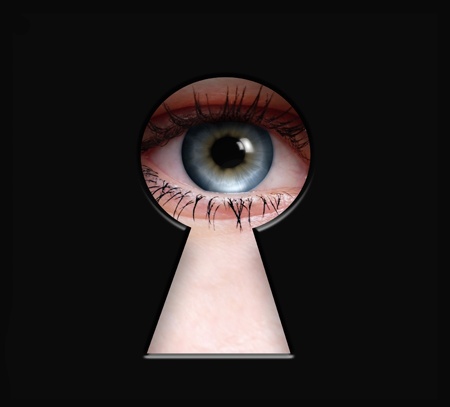What you can’t see on the shop floor may kill you
We often overlook the small benefits of paperless manufacturing and manufacturing software solutions, benefits that may have the greatest impact for your shop floor.
By Kristin McLane, President of CIMx Software
I’m being provocative with the title of this blog, but sometimes we forget there are benefits to paperless manufacturing we may not see at first, even if we use bright, flashing colors.I recently learned men have a 7% chance of being colorblind; for women, it’s less than .5%. Many manufacturers use color to drive work and control processes on the shop floor. For 7% of potential shop floor workers, this can be a real problem.
On a recent visit to a manufacturing facility I observed how critical color was to their production process. They didn’t make colorful parts or widgets (in fact, much of what they built was a boring monotone), but color was critical to the way they manufactured. Color is a fairly commonplace tool in our industry.
For manufacturers who still rely on paper or paper-on-glass document systems to run their shop floors (a group that includes a majority of manufacturers working today), color often drives production. Suppose you are using a word processor, such as MS Word, to provide instructions to your shop floor. An Excel spreadsheet keeps track of tools and inventory. Some manufacturers may use intricate databases built from Microsoft Access to provide information to the shop floor. In these situations, companies will use either Microsoft PowerPoint or PDF files to add graphics to the traveler (the packet of manufacturing directions that travels, often in a plastic sleeve, with the parts to be built).
 Work instructions and travelers are critical tools for a successful shop floor. To build their products, manufacturers rely on an engineer’s instructions placed in travelers. The documents in the traveler are maintained by an engineer (many times the same one that writes the instructions) who is responsible for ensuring only approved documents are in the packets. To draw attention to critical information, or quickly modify instructions when necessary, color is used. Documents may be color-coded to signify their path in the shop, their urgency, or to signal when a change has been initiated. Yes, a red pen can be a mission critical tool.
Work instructions and travelers are critical tools for a successful shop floor. To build their products, manufacturers rely on an engineer’s instructions placed in travelers. The documents in the traveler are maintained by an engineer (many times the same one that writes the instructions) who is responsible for ensuring only approved documents are in the packets. To draw attention to critical information, or quickly modify instructions when necessary, color is used. Documents may be color-coded to signify their path in the shop, their urgency, or to signal when a change has been initiated. Yes, a red pen can be a mission critical tool.For example, color will be used to draw attention to an area of concern in the process. This could be through a cover sheet printed on color paper or via changes marked in red. Color-blind workers (remember that potentially 7% of the colorblind workforce) must rely on a careful review of each paper that comes across their station. An urgent message marked in red would not have the same impact on someone who can’t see red, and red-green colorblindness is most common.
Manufacturers pride themselves on efficiency, but for almost 1 in 10 stations in the shop, the travelers aren’t efficiently communicating to the workers. Let’s face it, the entire situation fails in a number of places, and it’s no wonder mistakes and errors happen.
An electronic system not only ensures information arrives exactly where it needs to be on the shop floor, but provides the information in a format that practically eliminates miscommunication. You aren’t relying on a roll of the genetic dice for color blindness or the strength of a red pen to get critical customer information to the shop floor. This is what we mean by shop floor process control.
An engineer could poll the shop floor for color blind employees (which seem like a potential HR nightmare) or create a system that works as well in monotones as color, but this is not the most efficient solution and may cause as many problems as it solves.
Paperless manufacturing has been designed to eliminate a multitude of errors in your production process, and it does so because it is adaptable. Here is another way to think of it… paper or paper-on-glass work instructions are static, a fixed media, and are designed to deliver the SAME instruction to everyone. But, it is foolish to believe everyone is the same or your shop floor processes will never need to incorporate change. Fixed media causes many of the inefficiencies holding your shop floor back from success.
Paperless manufacturing is adaptable. It’s possible to add visual media such as video and 3D images to the work instructions. You can quickly and easily add any emphasis you need to the instruction, even to individual workers (eliminating the color-blindness quandary). Paperless manufacturing gives you adaptability without adding to the complexity. Sure, helping color blind workers might be a small benefit, but it touches on one of the strengths of paperless manufacturing- adaptability.
Contact us today to learn how CIMx Software can help deliver paperless manufacturing to your shop.
